Written on 13th October, 2020 | 3 min read
What Content Works Best for Early-Stage SaaS Startups? A Case Study
While there’s no standard answer that applies to all startups in all niches, there are some content types that tend to perform better for SaaS products.
Andreea Macoveiciuc
Strategist @School of Content
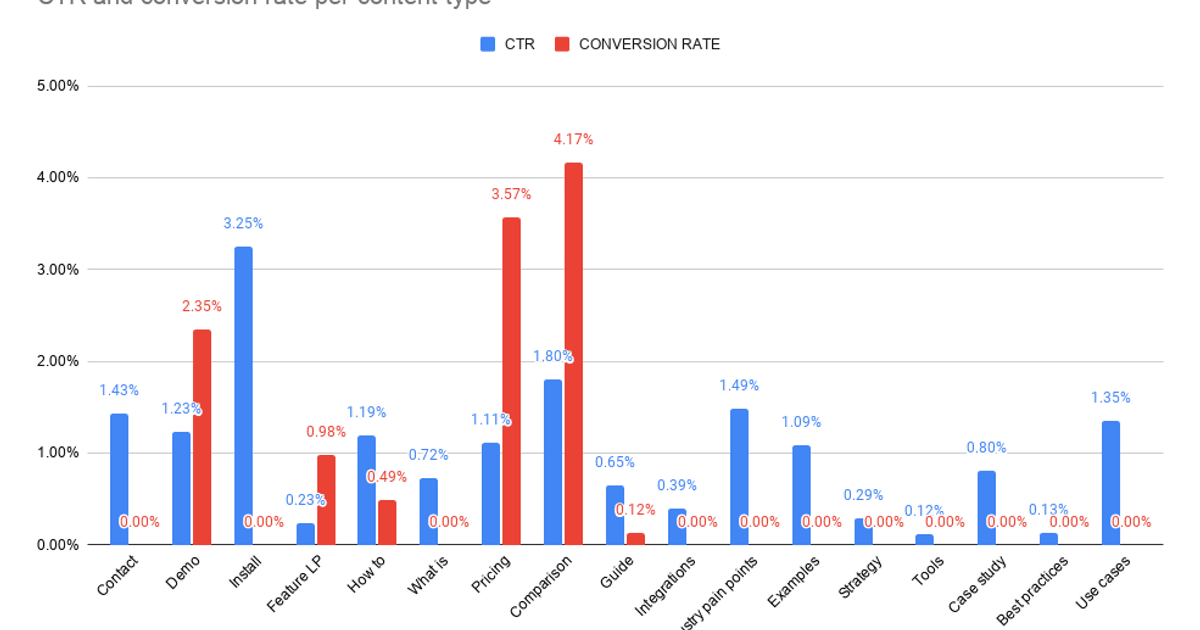
One of the common questions early-stage SaaS startups have is what types of content to create in order to attract more visitors and convert them to trial users or paying customers.
While there’s no standard answer that applies to all startups in all niches, there are some content types that tend to perform better for SaaS products.
These are mostly:
comparison articles — the startup vs. its competitors
alternative articles — the SaaS product presented as the best alternative to a known competitor
demos or product tours focused on specific use cases or pain points
how-to articles that focus on specific use cases or pain points
In this article, I’ll walk you through some insights from a SaaS content audit to see if these content types are, indeed, the best ones for early-stage startups.
We’ll look at the numbers with two goals in mind:
generating more organic traffic
converting more visitors into trial users or paying customers
Which content types perform better?
For this client, I’ve analyzed the following content types:
Contact page
Demo
Install
Feature landing page — these pages target specific pain points
How to
What is
Pricing
Comparison
Guide
Integrations
Industry pain points
Examples
Strategy
Tools
Case study
Best practices
Use cases
Our assumption was that the TOFU (top-of-the-funnel) content types, which target mostly queries with informational intent, will have more impressions and more organic visits, but lower conversion rates.
At the same time, we expected to see higher click-through and conversion rates for the BOFU (bottom-of-the-funnel) content types targeting queries with comparison or commercial intent.
Here’s how the numbers looked:
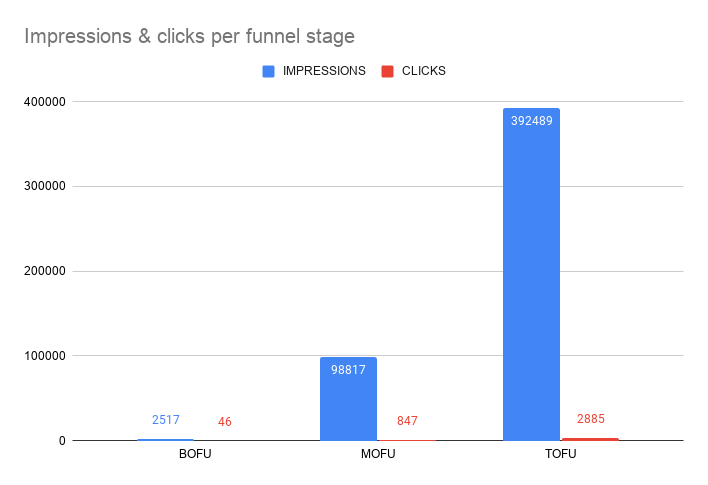
Image: Impressions & clicks per funnel stage
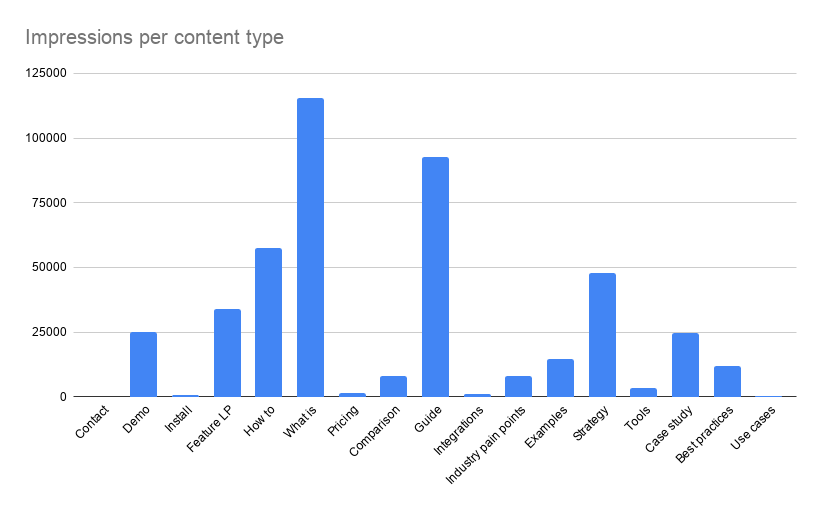
Image: Impressions per content type
We see that the top-of-the-funnel content types — mostly What is, Guides, How to, and Strategy/Thought leadership topics — are indeed getting a lot more impressions than the other funnel stages, but what about clicks and conversions?
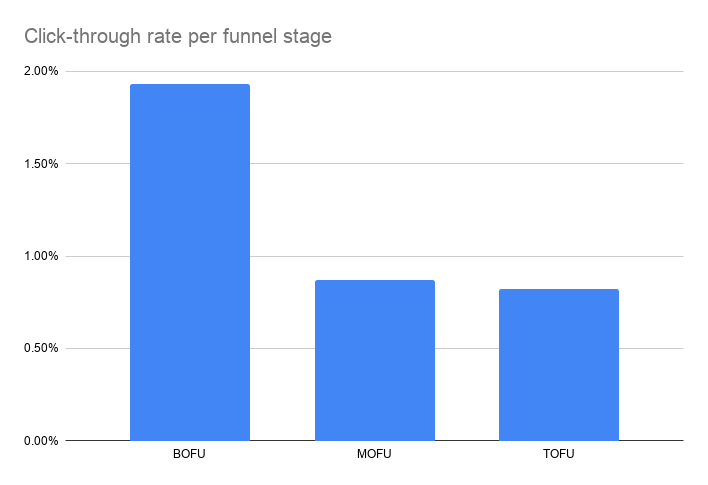
Image: Click-through rate per funnel stage
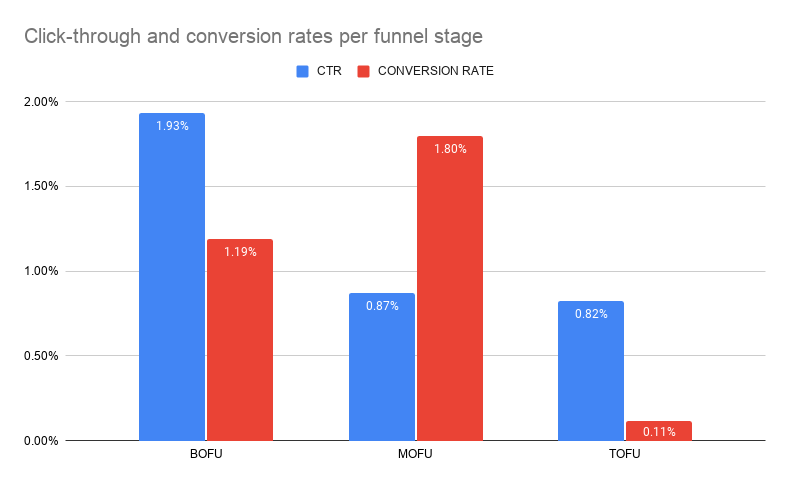
Image: Click-through and conversion rates per funnel stage
The bottom-of-the-funnel articles have better click-through rates, while the middle-of-the-funnel posts have the best conversion rates. So although MOFU content gets fewer impressions than TOFU topics, it’s more effective in converting users to customers.
However, if we compare BOFU and MOFU content, we see that the bottom-of-the-funnel has better click-through rates.
Without seeing the topics and content types, we can assume that the middle-of-the-funnel content gets viewed by both ideal customer profiles and users that aren’t a good fit for this particular product (they don’t click through).
Now let’s look at the content types and how they perform in terms of CTR and conversion rates.

Image: Clicks per content type
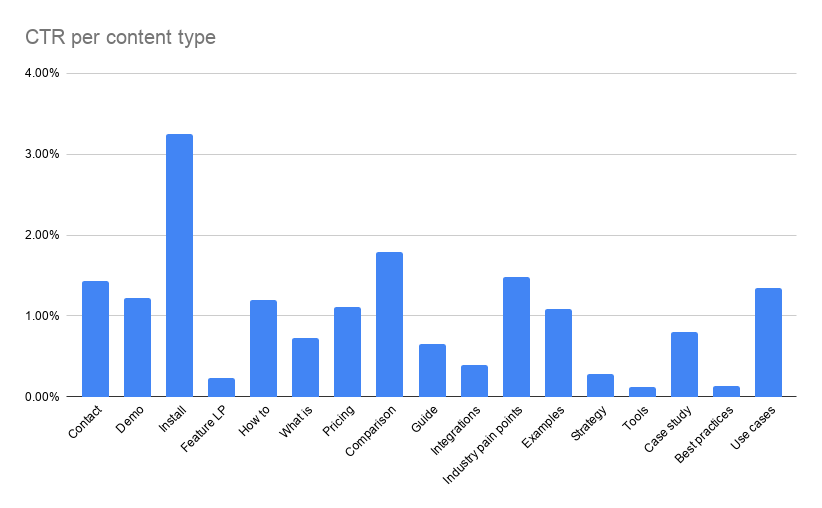
Image: CTR per content type
The informational articles get the most clicks, but the click-through rate is the best for middle- and bottom-of-the-funnel content, such as installation steps, product comparisons, industry pain points, product tour/demo, product use cases, and how-to content.
In what concerns conversions, the numbers are as follows:
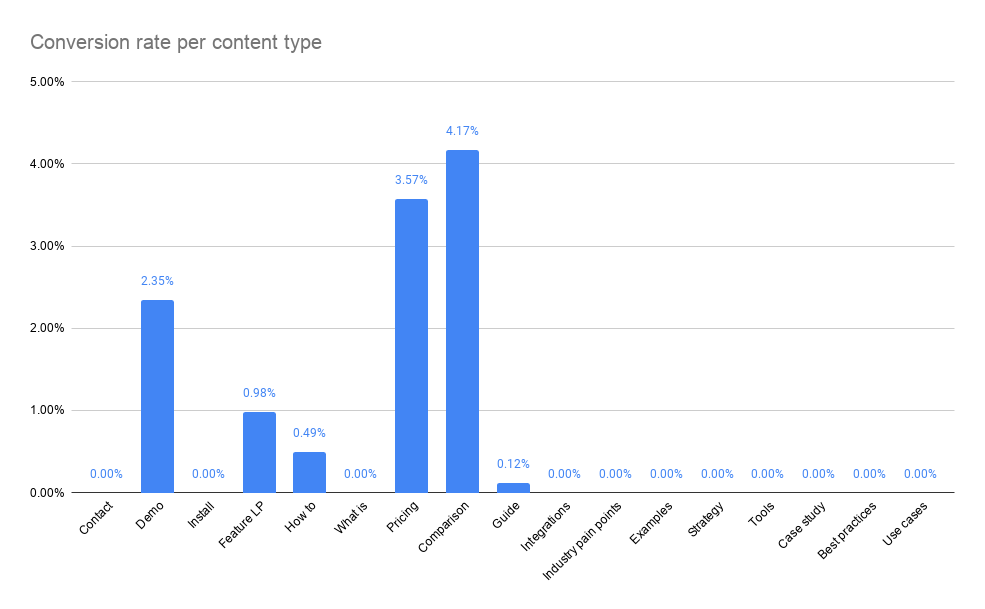
Image: Conversion rate per content type
This data confirms our initial assumptions: comparison posts, pricing and demo pages and feature landing pages focused on pain points are converting the best for this SaaS startup.
On the other hand, informational content types are performing poorly — in most cases, the conversion rate is 0%.
Let’s look at one more set of numbers before drawing a conclusion: conversion vs. click-through rates for the different types of content posted by this SaaS startup.
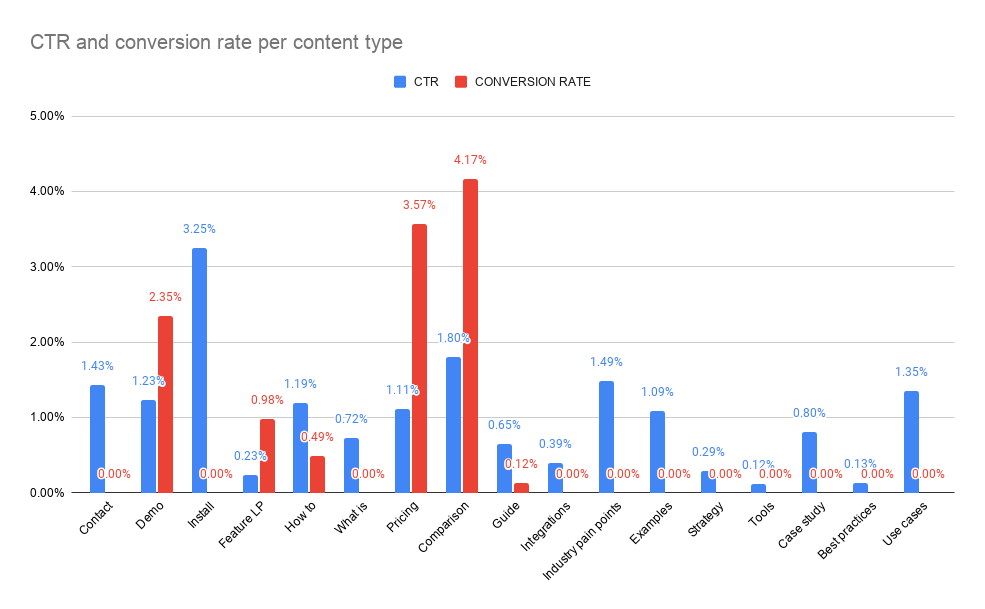
Image: CTR and conversion rate per content type
We notice that comparison posts are performing the best, in terms of both click-through and conversion rates. This type of content is followed by demo/product tour pages and by pricing pages.
The next ones are the how-to posts and feature landing pages, which are targetting specific pain points. However, the industry articles — despite the good click-through rates, aren’t generating conversions yet.
How about the informational content types — guides, what is, strategy/thought leadership, best practices articles?
These aren’t performing well, so for this particular startup, it makes no sense to invest time into creating more top-of-the-funnel content, unless their only focus is getting more page views.
The top-of-the-funnel, informational content is, indeed, generating more views than the other types:
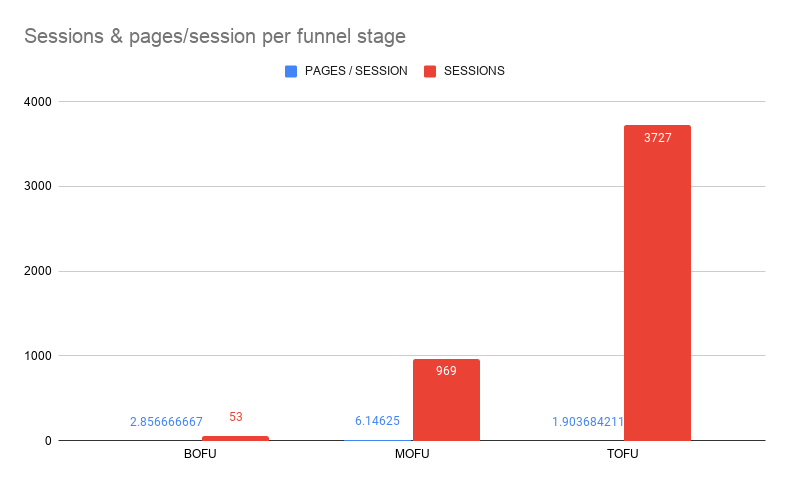
Image: Sessions & pages session per funnel
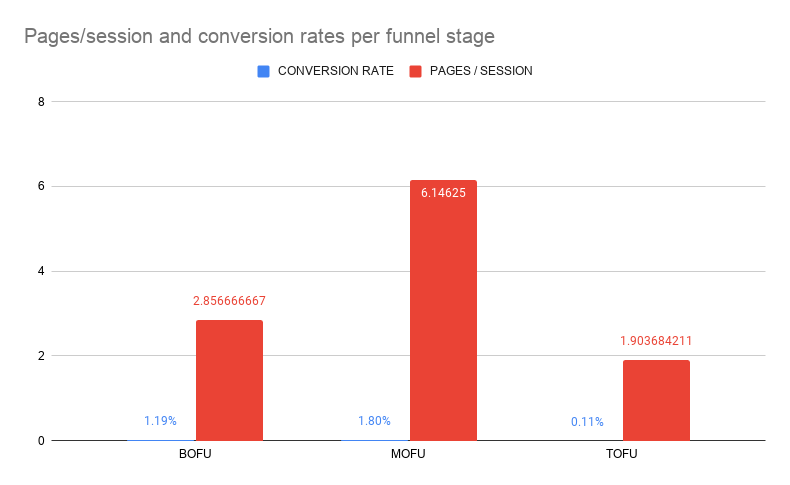
Image: Pages session and conversion rates per funnel
What’s interesting to see is that middle-of-the-funnel content, which is the best performing for this client, gets the most pages/session (average numbers in the graphics), as well as the best conversion rate.
So if this startup wants to increase their chances of converting more users, they could focus more on MOFU content.
Also, as a growth hacking experiment, they could optimize the bottom-of-the-funnel content to encourage users to visit more pages/session and see if this helps drive conversions up as well.
Of course, these numbers will vary depending on the amount of content produced, the niche, the type of SaaS, and whether it’s a B2B or B2C product.
Still, you can take these insights into consideration when planning your content calendar and deciding the types of content to invest more time in.
If you own an early-stage SaaS startup and need some guidance with your content strategy, or you'd like to benefit from a similar content audit, get in touch with our team!